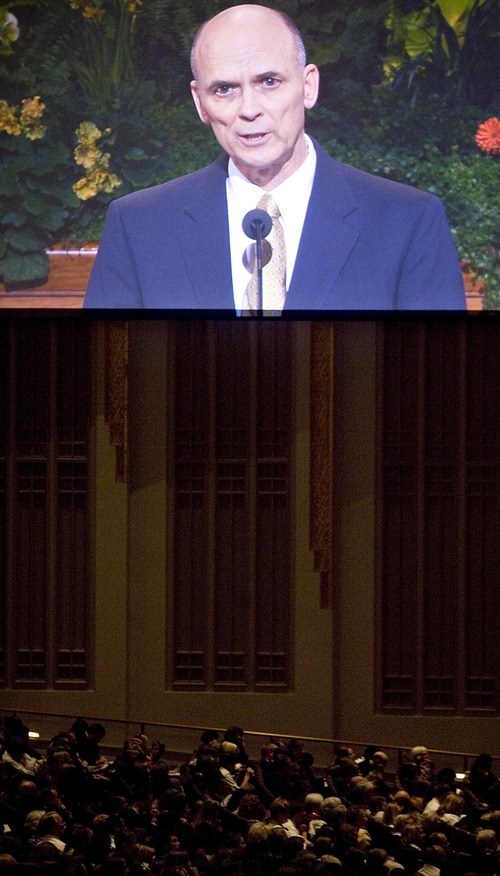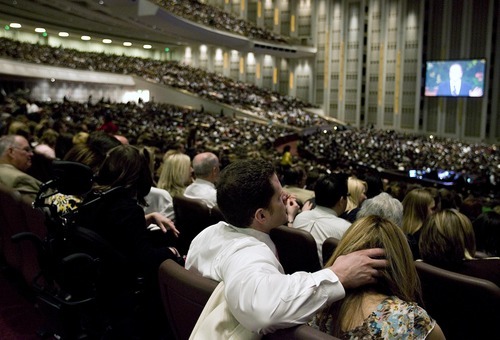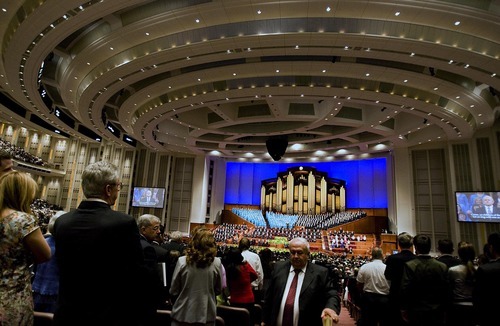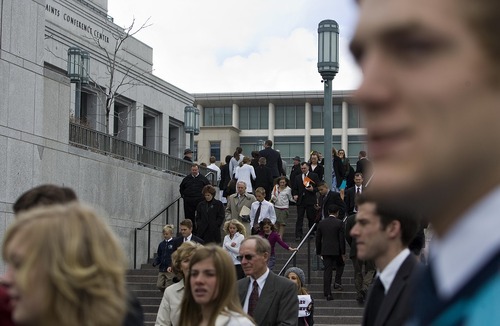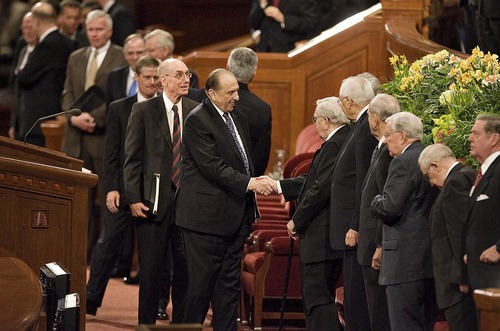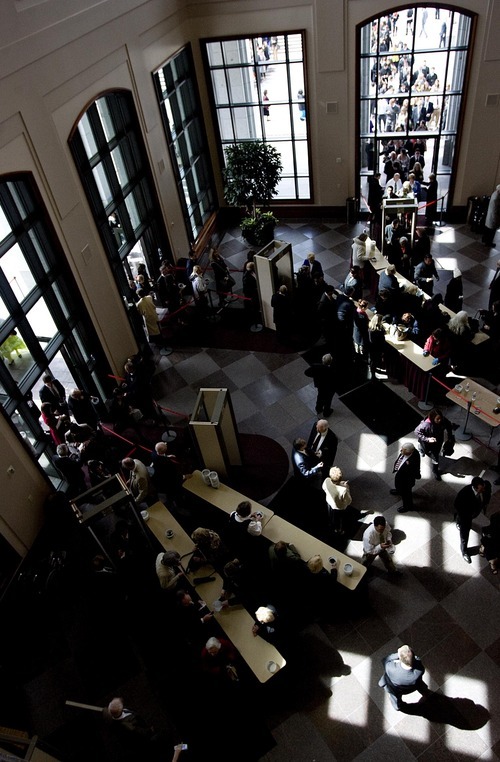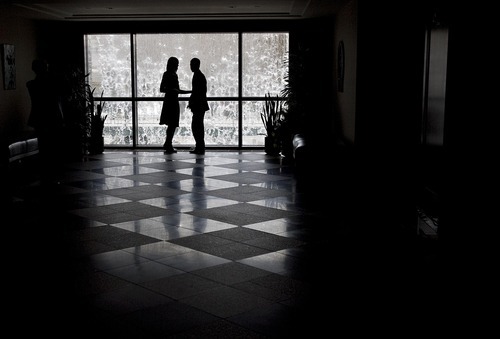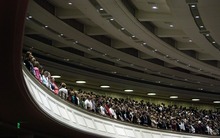This is an archived article that was published on sltrib.com in 2011, and information in the article may be outdated. It is provided only for personal research purposes and may not be reprinted.
For the second consecutive day, LDS Church President Thomas S. Monson and other leaders described, praised and celebrated the church's long-standing efforts to aid the poor.
The LDS Church's welfare program is "inspired of God," Monson told more than 21,000 people in the Conference Center in downtown Salt Lake City, and millions more watching via satellite in chapels across the world.
Other speakers Sunday during the morning session of the church's 181st Annual General Conference discussed Jesus Christ's atoning sacrifice, the need for repentance, hope for the future and the path of discipleship. Apostle Richard G. Scott repeated, for the third time during the conference, the dictate for single Mormon men to stop postponing marriage.
Addressing this global LDS community can be daunting, said Jeffrey R. Holland, an apostle.
Mormon leaders must speak to young, middle-aged and old, new converts and multi-generational members, single, married, at home or far from it, he said. They are expected to soothe and inspire as well as warn and chasten members, and no one assigns them the topics.
"We understand not everyone is viewing pornography, or shirking marriage, or having illicit sexual relationships ... violating the Sabbath or bearing false witness or abusing a spouse," Holland said. "[But] if we teach by the Spirit and you listen by the Spirit, some one of us will touch on your circumstance, sending a personal prophetic epistle directly to you."
Several speakers discussed the 75th anniversary of the LDS welfare program, launched in 1936, during the Great Depression, and based on the principle of self-reliance and personal responsibility.
"No matter how many temples we build, no matter how large our membership grows, no matter how positively we are perceived in the eyes of the world," LDS Presiding Bishop H. David Burton said, "should we fail in this great core [scriptural] commandment to 'succor the weak, lift up the hands which hang down, and strengthen the feeble knees,' or turn our hearts from those who suffer and mourn, we are under condemnation and cannot please the Lord."
Burton accompanied the late LDS Church President Gordon B. Hinckley to Nicaragua in 1998, when the church president spoke to 1,300 Mormons who had survived Hurricane Mitch that claimed more than 19,000 lives.
"As long as the [LDS] Church has resources," Hinckley told the members, "we will not let you go hungry or without clothing, or without shelter. We shall do all that we can to assist in the way that the Lord has designated that it should be done."
The church's "prophetic welfare plan" Burton said, "is not merely an interesting footnote in the history of the church ... It is the essence of who we are as individual disciples of our Savior and exemplar, Jesus the Christ."
Silvia Allred, a native of El Salvador and first counselor in the General Relief Society presidency, said that the church's all-women organization is "at the heart of the welfare program."
"Relief Society presidents visit homes to assess the needs for a bishop. Inspired visiting teachers watch over and care for sisters and families," Allred said in her strong Spanish accent. "They are often the first response in times of immediate need. Relief Society sisters provide meals, render compassionate service, and give constant support during times of trial."
Around the world, Mormon women who have little themselves are "constantly helping those who they thought were in greater need," she said, describing assistance offered by women in Chile and Argentina during economic downturns. Recently, she has witnessed, she said, similar Mormon efforts in the Democratic Republic of Congo, Madagascar and Zimbabwe.
"To think that a humble sister or brother with a church calling can go into a home where there is poverty, sorrow, sickness, or distress, and can bring peace, relief, and happiness," Allred said, "is astonishing."
Monson ended Sunday morning's session by talking about the importance of temples as "more than stone and mortar."
These large Mormon sanctuaries now dotting the globe are "filled with faith and fasting," he said. "They are built of trials and testimonies. They are sanctified by sacrifice and service."
Now, 85 percent of church members live within 200 miles of a temple, the LDS leader said, "and for a great many of us, that distance is much shorter."
He noted with excitement the soon-to-be built temple in Rome, where ground was broken last fall.
It is "one of the most historic locations in the world, a city where the ancient apostles Peter and Paul preached the gospel of Christ and where each was martyred," Monson said. "In a coming day, the faithful in this, the Eternal City, will receive ordinances eternal in nature in a holy House of God."
Monson concluded the conference with his feelings about Easter and Jesus Christ.
"To the depths of my very soul I am grateful to Him," Monson said. "He taught us how to live. He taught us how to die. He secured our salvation."
The conference was adjourned until October.


